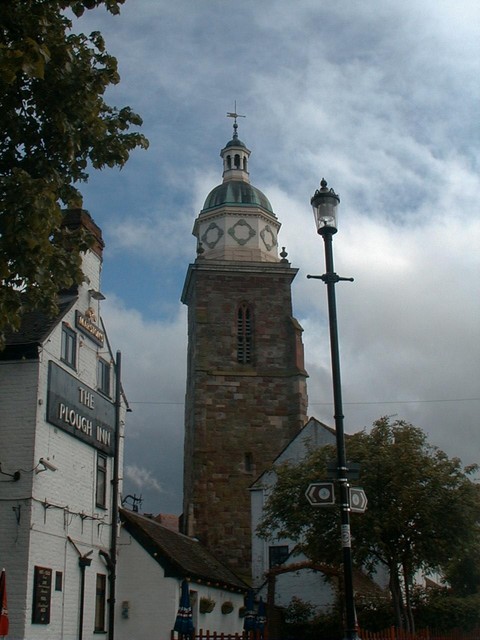The Old Church of St Peter and St Paul Upton on Severn, Worcestershire.
The Bell Tower ('Pepperpot'), which dominates the main approach into Upton, is the oldest surviving building in the town and has great value as a local landmark. The main body of the Tower is probably fourteenth century, although its base is thirteenth century and it is possible that an even earlier wooden structure of Saxon foundation once stood on the site.
The medieval church is generally thought to have been founded by the Boteler family and was dedicated to St Peter and St Paul. It was built in the Early English style and had a spire and two chancels, one for the parson and one for the parishioners.
On 29 August 1651, considerable damage was done to the church when it was held by Commonwealth troops against the Royalists during the Battle of Upton, one of the bravest actions of the Civil War. The defeat of the Royalists and the consequent loss of the important river crossing put Charles 11 at a serious strategic disadvantage, and he was to be defeated shortly afterwards at the Battle of Worcester.
The church continued to deteriorate and it was not until 1754 that it was decided to erect a new nave in the then currently fashionable classical style. The new building was simple, with roundheaded windows with semicircular openings above, a tiled roof behind a tall parapet and a small projecting chancel with a Venetian east window. In 1770 the spire of the old tower was considered unsafe and it was replaced by the wooden hexagonal lantern and lead cupola (later sheathed in copper) to the design of Midland architect Anthony Keck, giving the Tower its 'pepperpot' proportions.
By the nineteenth century the church had become too small and a Neo-Gothic replacement was built at the end of Old Street, completed in 1879. The nave of the old church was eventually dismantled in 1937 and the churchyard was laid out as a garden. In 1953 the church was declared an Ancient Monument.
 The old church tower, Upton on Severn Worcs
The old church tower, Upton on Severn Worcs

 [ 1 ]
[ 1 ]  [
[

